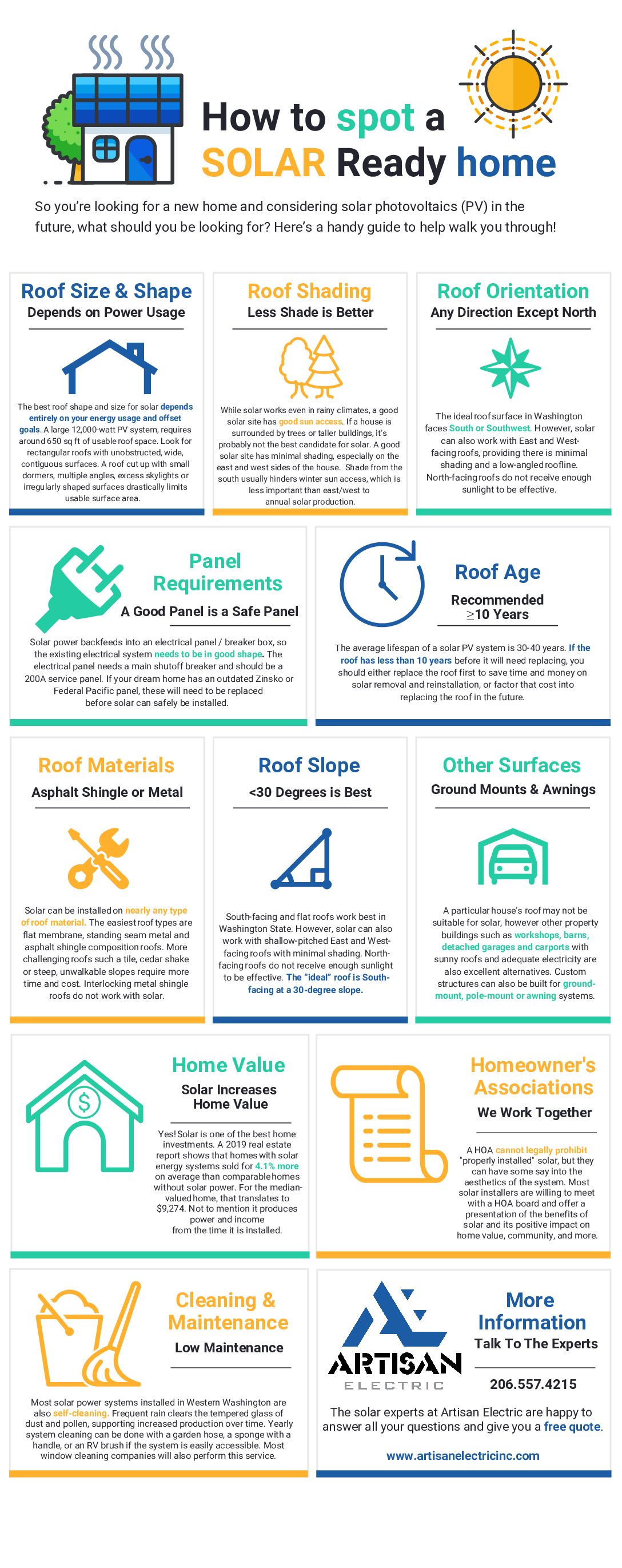So you’re looking for a new home and considering solar photovoltaics (PV) in the future, what should you be looking for? Here’s a handy guide to help walk you through!
(Prefer to cut to the chase? Sign up for your free site survey NOW and find out if your home is right for solar!)
Electrical Panel Requirements
Solar power back feeds into an electrical panel / breaker box, so the existing electrical system needs to be in good shape. The electrical panel needs a main shutoff breaker and should be a 200A service panel. If your dream home has an outdated Zinsko or Federal Pacific panel, these will need to be replaced before solar can safely be installed.
Roof Shading
While solar works even in rainy climates, a good solar site has good sun access. If a house is surrounded by trees or taller buildings, it’s probably not the best candidate for solar. A good solar site has minimal shading, especially on the east and west sides of the house. Shade from the south usually hinders winter sun access, which is less important than east/west to annual solar production.
Roof Shape
The best roof shape and size for solar depends entirely on your energy usage and offset goals. A large 12,000-watt PV system, for instance, requires around 650 square feet of usable roof space. Look for rectangular roofs with unobstructed, wide, contiguous surfaces. A roof cut up with small dormers, multiple angles, excess skylights or irregularly shaped surfaces drastically limits usable surface area.
Roof Orientation and Slope
South-facing and flat roofs work best in Washington State. However, solar can also work with shallow-pitched East and West-facing roofs with minimal shading. North-facing roofs do not receive enough sunlight to be effective. The “ideal” roof is South-facing at a 30-degree slope.
Roofing Material
Solar can be installed on nearly any type of roof material. The easiest roof types are flat membrane, standing seam metal, and asphalt shingle composition roofs. More challenging roofs such a tile, cedar shake, or steep, unwalkable slopes require more time and cost. Interlocking metal shingle roofs do not work with solar.
Roof Age
The average lifespan of a solar PV system is 30-40 years. If the roof has less than 10 years before it will need replacing, you should either replace the roof first to save time and money on solar removal and reinstallation, or factor that cost into replacing the roof in the future.
Land Space and Other Surfaces
A particular house’s roof may not be suitable for solar, however other property buildings such as workshops, barns, detached garages and carports with sunny roofs and adequate electricity are also excellent alternatives. Custom structures can also be built for ground-mount, pole-mount or awning systems.
How Do I Clean and Maintain Solar Panels?
Most solar power systems installed in Western Washington are also self-cleaning. Frequent rain clears the tempered glass of dust and pollen, supporting increased production over time. Yearly system cleaning can be done with a garden hose, a sponge with a handle, or an RV brush if the system is easily accessible. Most window cleaning companies can also perform this service.
Homeowner Associations
A HOA cannot legally prohibit “properly installed” solar, but it can have some say in the aesthetics of the system. Most solar installers are willing to meet with a HOA board and offer a presentation of the benefits of solar and its positive impact on home value, community, and more.
Does solar add value to a house?
Yes! Solar is one of the best home investments. A 2019 report from Zillow shows that homes with solar energy systems sold for 4.1% more on average than comparable homes without solar power. For the median-valued home, that translates to $9,274. Not to mention it produces power and income from the time it is installed. Installing solar will increase the home value while also making it stand out in a competitive housing market.
Does Solar Power Work in the Pacific Northwest?
Absolutely! You can satisfy all your electricity needs with solar power in Western Washington. The short, overcast days of winter are offset by our long, sunny and mild-temperature days of summer! Higher temperatures reduce solar power efficiency and production, which is why the Pacific Northwest outperforms systems in the Southwest during the summer. Washington also requires utilities to participate in net metering, which means you can turn your utility meter backward during the summer at a 1:1 ratio, and use that excess power when you need it during the winter!

